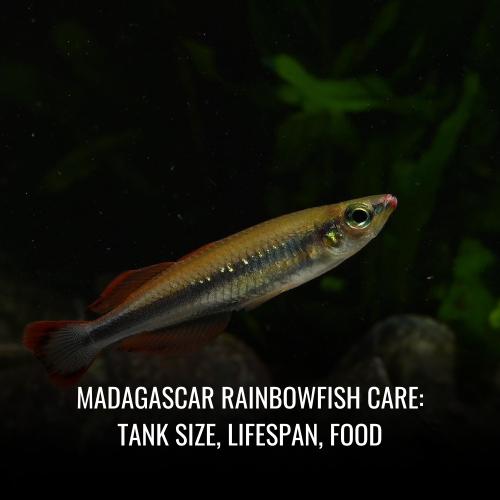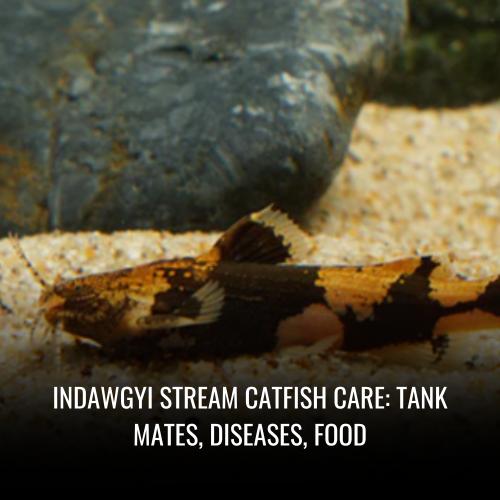Tiger Hillstream Loach Care: tank mates, Diseases, Food
This post contains affiliate links. As an Amazon Associate, we earn from qualifying purchases.
The Tiger Hillstream Loach boasts a flattened, hydrodynamic shape for navigating strong currents in the aquarium. Its unique coloring – light grayish/yellow with thick, random directional black stripes – is most prominently displayed on its caudal and dorsal fins. This pattern spans its entire body, giving it a captivating, standout look. Often mistaken for catfish or mini-stingrays, the Tiger Hillstream Loach is a unique species popular among aquarists for its striking appearance.
| Attribute | Detail |
|---|---|
| Scientific Name | Sewellia lineolata |
| Common Name | Tiger Hillstream Loach |
| Family | Balitoridae |
| Usual Size in Tanks | Up to 3 inches (7.5 cm) |
| Recommended pH Range | 6.5-7.5 |
| Recommended Water Hardness (dGH) | 10-15°dGH |
| Recommended Temperature | 68-75°F (20-24°C) |
| Reproduction | Egg layer |
| Origin | Fast-flowing streams, Asia |
| Temperament to Own Species | Peaceful |
| Temperament Toward Other Species | Generally peaceful |
| Usual Place in Tank | Bottom dweller, on smooth rocks and glass |
| Lifespan | 8-10 years with proper care |
| Tank Size Requirement | Minimum 30 gallons |
| Filtration System | Must replicate strong currents of native habitat |
| Sexual Dimorphism | Not easily distinguished |
| Substrate Cleaning | Contributes by grazing algae |
Scientific Name
The Tiger Hillstream Loach, scientifically recognized as Sewellia lineolata, belongs to the family Balitoridae. This distinctive species is also familiar to aquarists by other names such as the Gold Ring Butterfly Sucker and the Reticulated Hillstream Loach. Among its unique traits is its compatibility with shrimp, as it is 100% shrimp safe, posing no threat to these fellow aquarium inhabitants.
| Scientific Classification | Detail |
|---|---|
| Kingdom | Animalia |
| Phylum | Chordata |
| Class | Actinopterygii |
| Order | Cypriniformes |
| Family | Balitoridae |
| Genus | Sewellia |
| Species | S. lineolata |
Average Size
Hillstream Loaches, including the Tiger Hillstream Loach, are renowned for their petite stature, typically measuring in the cozy range of 2-3 inches in length. This relatively small size endows them with the agility to navigate their environment effortlessly, seeking refuge in crevices and exploring the undersides of smooth rocks. They are often seen as the diligent janitors of the freshwater aquarium, with an ability to scour surfaces other fish may overlook.
| Characteristic | Advantage |
|---|---|
| Small Size | Enables hiding and access to more food spots. |
| Flattened Belly | Helps resist currents; energy-efficient. |
| Sucker Mouth | Allows secure attachment to surfaces. |
The Tiger Hillstream Loach’s size and specialized adaptations make them not only a fascinating specimen for enthusiasts but also a highly effective and energetic member of the freshwater tank community.
Lifespan
The longevity of the enchanting Hillstream Loaches, such as the tiger and reticulated variety, is remarkable—they often grace freshwater aquaria for 8 to 10 years. Their lifespan not only reflects their resilience but also underscores the profound impact of dedicated care on their well-being.
| Requirement | Purpose | Ideal Value |
|---|---|---|
| Water quality | Prevent diseases, ensure healthy growth | Regular, clean water |
| Temperature | Match loach’s natural habitat conditions | 68-75°F (20-24°C) |
| Water hardness | Maintain balance in the water column | Moderate to high |
Careful attention to these details not only extends the life of these exquisite loaches but also enriches the aquarium experience for enthusiasts.
Natural Habitat
Originating from the rapidly moving waters of Southeast Asia, the Reticulated Hillstream Loach is truly a product of its environment. These fish are found in zones where the rivers and streams are decorated with a rocky bottom, swirling with strong currents that oxygenate the cool water—a setting they have become perfectly engineered to navigate.
| Natural Habitat Elements | Aquarium Replication Strategy |
|---|---|
| Strong water currents | Install powerheads or stream pumps |
| Rocky substrate | Use smooth rocks and gravel |
| Cool water temperatures | Maintain 68-75°F (20-24°C) |
| High oxygen levels | Ensure proper water agitation |
Meeting these criteria is not just about aesthetics; it’s about nurturing the authentic lifestyle of the Hillstream Loach, promoting their natural foraging behavior, and potentially encouraging breeding activities in your freshwater aquarium.
Appearance
The diminutive Tiger Hillstream Loach, with a maximum size of roughly 2.5 inches, boasts a physique that piques curiosity. Its resemblance to a miniature stingray is uncanny, thanks to a streamlined body shape, a flat underside, and fins that extend horizontally, which equip it to latch onto surfaces with ease. Observers are quickly drawn to its aesthetic charm, highlighted by a pattern of light spots dancing across a canvas of dark brown stripes.
Key Visual Features
| Feature | Description |
|---|---|
| Body Shape | Streamlined with a flat underside |
| Size | Reaches up to 2.5 inches in length |
| Fins | Horizontal fins for gripping smooth surfaces |
| Color Pattern | Light spots on dark brown striping |
| Behavior | Climbing and fin fluttering similar to stingrays |
This elegant inhabitant is a tranquil yet engaging addition to any freshwater aquarium setup.
Behavior & Temperament
Tiger Hillstream Loaches are celebrated for their docile and intriguing nature. Unlike many other aquatic species, these loaches are not known to be fin nippers. Their peaceful temperament makes them ideal residents for diverse communities within an aquarium, where their amicable nature creates a tranquil environment. They steer clear of confrontations, thereby reducing the likelihood of stress-related issues within the tank.
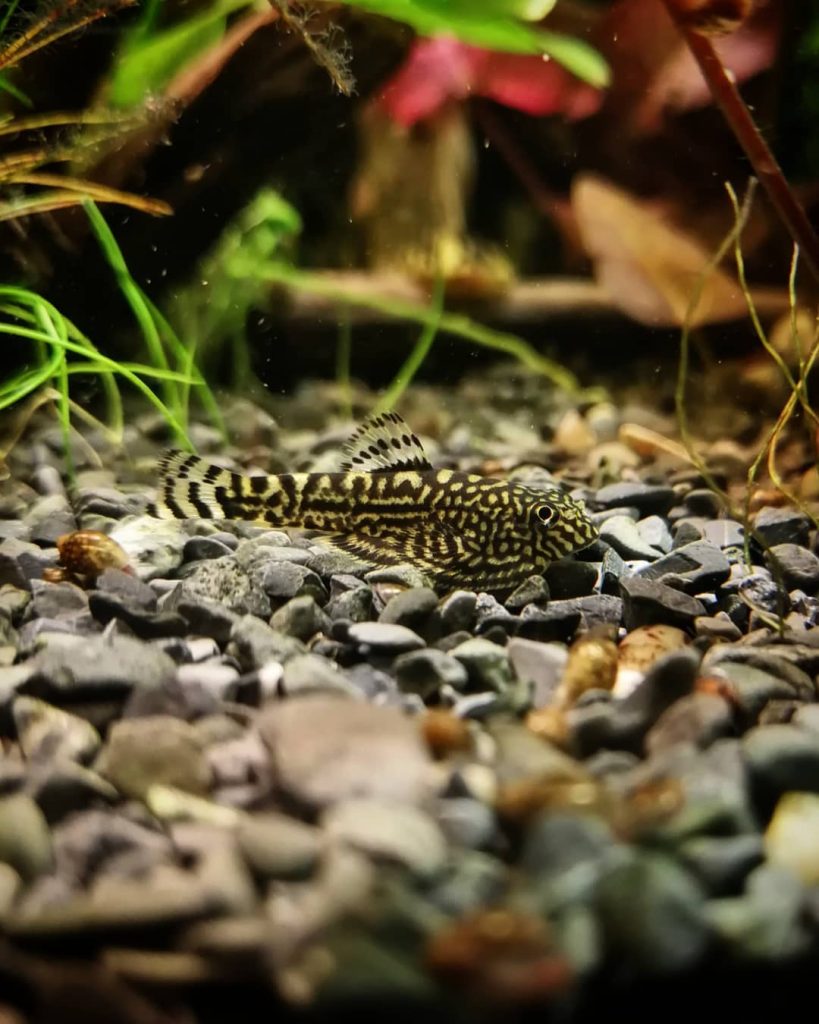
Are Tiger hillstream loach Fin Nippers?
Contrary to the behavior of some other fish, Tiger Hillstream Loaches do not partake in fin nipping. Their easygoing nature precludes them from such aggressive conduct, allowing them to coexist harmoniously with a variety of tank mates. This quality is particularly important for ensuring the safety and wellbeing of other peaceful fish species sharing their environment.
Are Tiger hillstream loach Aggressive To Each Other & Other Fish?
The Tiger Hillstream Loach is known for its peaceable interaction with both its own kind and other species. These loaches showcase cooperation and sociability in their native shoals in the wild, a behavior which translates equally to the aquarium setting. Their preference for group dynamics, coupled with a non-confrontational demeanor, signifies their predisposition to avoid antagonism towards other fish.
Are Tiger hillstream loach Friendly To Each Other & Other Fish?
Embodying the essence of a cooperative community, Tiger Hillstream Loaches display friendly gestures towards one another as well as their aquatic neighbors. Their gregarious nature becomes visible as they effortlessly mingle within their surroundings. To thrive, they necessitate an environment that respects their social behavior, aligning well with equally peaceful cohabitants in community aquariums.
Are Tiger hillstream loach Schooling Fish?
Yes, Tiger Hillstream Loaches exhibit schooling behavior that mirrors their preference for communal living. In the wild, these loaches are typically found in groups and when transitioning to an aquarium, maintaining this social structure helps them exhibit their natural, interactive habits. Schooling promotes a sense of belonging and enhances their confidence, allowing them to be more vibrant and interactive within the tank.
Can You Have Just One Tiger Hillstream Loach In The Tank?
While it is physically possible to keep a solitary Tiger Hillstream Loach, it is far from ideal. These loaches benefit greatly from companionship, with observable differences in behavior when they are kept in groups versus alone. To encourage the full spectrum of their behavioral traits and to ensure their psychological wellbeing, maintaining a group of three or more is highly recommended.
Do Tiger Hillstream loach Need To Be In Groups?
The Tiger Hillstream Loach’s natural inclination is to live and interact within a shoal. Thus, they are best kept in groups, which not only echoes their wild behavior, but also contributes to their overall health in captivity. A group setting allows these loaches to demonstrate their complete range of social behaviors and ensures a more animated and enriched life within the aquarium.
Table 1: Tiger Hillstream Loach Temperament Overview
| Behavior | Description |
|---|---|
| Fin-Nipping | Non-existent; they are peaceful and do not engage in fin nipping. |
| Aggression | Absent towards both their own kind and other species; they maintain a peaceful coexistence. |
| Friendliness | Friendly to other loaches and non-aggressive fish; ideal for community tanks. |
| Schooling | They prefer to live in groups, reflecting their natural inclination for shoaling. |
| Solitary Living | Not recommended; they thrive in the presence of conspecifics. |
| Group Living | Necessary for natural behavior expression and overall well-being. |
List of Ideal Tank Mates for Tiger Hillstream Loaches:
- Danios
- Peaceful Tetras
- Rasboras
- Dwarf Shrimp
- Small Loach Species
- Non-Aggressive Catfish Species
Food & Diet
Tiger hillstream loaches are recognized for their penchant for algae, which comprises a significant part of their diet. These omnivorous fish channel their energy into scouring the tank, consuming the natural algae and biofilm that form on surfaces, mirroring their behavior in their native fast-flowing streams.
To supplement their fascination with algae, aquarists commonly offer sinking algae wafers. Not only does this practice cater to their nutritional needs, but it also satiates their appetite for grazing and supports their wellbeing.
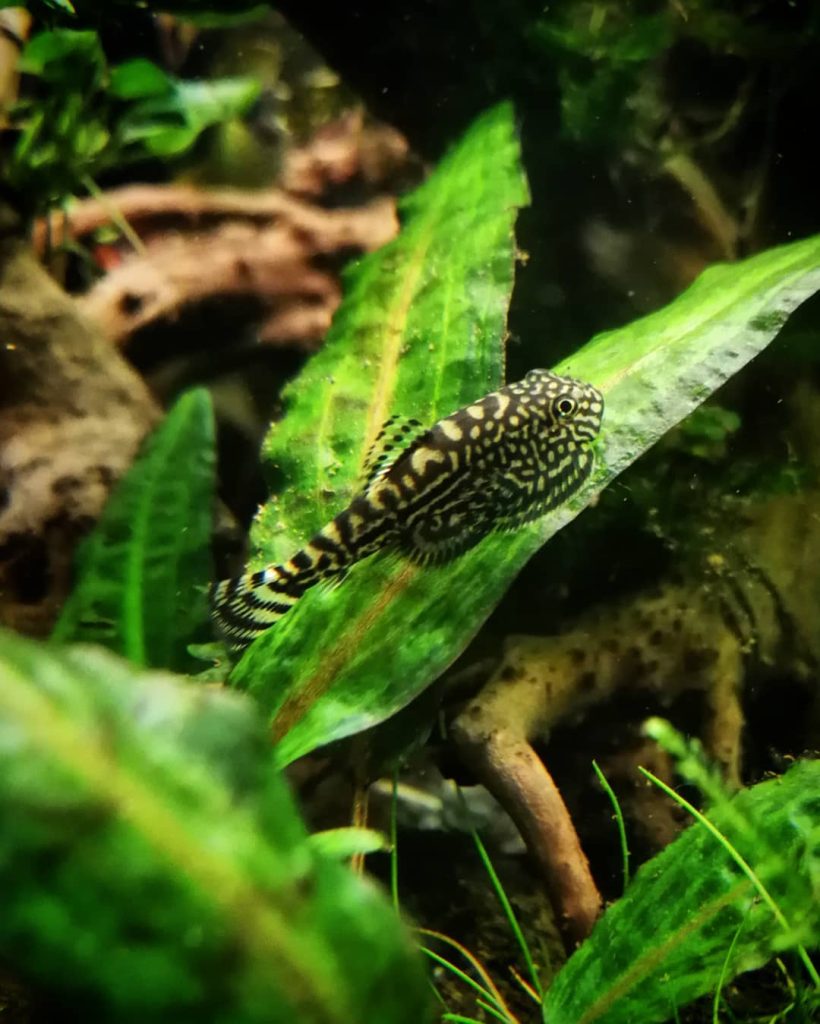
Do Tiger Hillstream Loach Eat Shrimp?
While tiger hillstream loaches are typically more captivated by the hunt for algae, it is not unheard of for them to eat small shrimp, particularly if they are significantly larger than the shrimp. To mitigate this risk, aquarists can select larger or quicker shrimp species that can more readily evade the loaches.
Additionally, providing an aquarium layout rich in plant life allows shrimp to hide and coexist more peacefully with these curious bottom dwellers. In decorated tanks with an abundance of smooth rocks, loaches can focus on their favorite algae without harming their tank mates.
Do Tiger Hillstream Loach Eat Bloodworms?
Bloodworms offer a savory treat to the omnivorous tiger hillstream loach. Whether freeze-dried or fresh, these worms are a valuable addition to the diet, delivering essential proteins that support the vitality of these loaches. Alongside sinking carnivore pellets, fish flakes, and various other nutritious options that descend to the bottom layers of the aquarium, bloodworms enrich the dietary range for these fish. It’s advisable to provide this type of food as a part of a balanced diet, ensuring that the tiger hillstream loaches receive a comprehensive array of vitamins and nutrients.
Do Tiger Hillstream Loach Eat Mosquito Larvae?
Feeding tiger hillstream loaches with mosquito larvae is more than just a dietary choice; it’s an engagement of their predatory instincts and a natural simulation of their wild foraging habits. Rich in protein, mosquito larvae round out a diet filled with brine shrimp and daphnia to promote robust health.
Such live and protein-packed foods serve as excellent sources of nourishment, offering both a palatable diet and an enriching experience, ensuring that the loaches’ needs for high-quality food are successfully met.
Do Tiger Hillstream Loach Eat Planaria?
Planaria, a type of flatworm, can find itself on the menu for a tiger hillstream loach. Thanks to the loach’s distinct body structure and mouth adaptation, they are able to manage the consumption of these small invertebrates, which occasionally appear in aquariums. Observing the loach engaging in this aspect of their natural behavior could be a delight for aquarists and a benefit for the tank ecosystem, assisting in the control of planaria populations.
Do Tiger Hillstream Loach Eat Plants?
The diet of tiger hillstream loaches can often lead to some confusion regarding their interaction with live plants. While they may occasionally be seen grazing on plant surfaces, it’s usually the biofilm and algae they’re after, not the plants themselves. To maintain their health, a varied diet that blends plant-based foods with live foods enhances the quality of life for these loaches.
Although they’re not typical plant eaters, ensuring the presence of nutritious plant material and ample live food choices will cover all dietary bases for these omnivores.
Table 2: Tiger Hillstream Loach Dietary Preferences
| Food Type | Preference | Frequency | Notes |
|---|---|---|---|
| Algae | High | Daily | Algae is a staple in their diet; supplemented with algae wafers. |
| Shrimp | Low | Rare/Occasional | They might eat small shrimp but prefer algae. |
| Bloodworms | Moderate | Part of a balanced diet | Offer as a supplement to provide protein. |
| Mosquito Larvae | Moderate | Part of a balanced diet | Stimulate hunting instincts; provide a source of protein. |
| Planaria | Moderate | Occasional/Opportunistic | Consume these flatworms when available in the tank. |
| Plants | Low | Rarely | They often graze on biofilm on plants, not the plant itself. |
List of Recommended Dietary Supplements for Tiger Hillstream Loaches:
- Algae Wafers
- Sinking Carnivore Pellets
- High-Quality Flake Food
- Freeze-Dried Bloodworms
- Live/Frozen Brine Shrimp
- Daphnia
- Mosquito Larvae
Sexing: Male vs Female
Determining the sex of hillstream loaches can be quite intriguing, as they exhibit distinct sexual dimorphism. For instance, in tiger hillstream loaches, the females are discernible by their broader heads and fuller bodies, a trait particularly useful during the reproductive period. On the contrary, males boast a sleeker appearance with two notable distinctions – a subtle fringe of small tubercles crowning the forehead and characteristic “fences” adorning the initial rays of their pectoral fins.

Sexing these loaches is easiest when they are mature, which underscores the recommendation to acquire a small group, ideally six or more juveniles. This increases the chances of observing a mix of sexes as they grow and their sexual characteristics become more pronounced.
Sexual Characteristics of Hillstream Loaches
| Characteristic | Male | Female |
|---|---|---|
| Body Shape | Streamlined form | Wider head, plumper body |
| Pectoral Fins | Raised areas (fences) | Normal, without raised areas |
| Head | Small tubercles along edge | Smoother head contour |
In the Sewellia lineolata species, these differences stand out even more, with plump-bodied females and refined males revealing the elegance of sexual dimorphism in the aquatic world.
Tiger hillstream loach Tank Mates
When considering tank mates for your tiger hillstream loach, peaceful cohabitation should be your guiding principle. These loaches thrive alongside small, non-aggressive fish like tetras, rasboras, and guppies. Creating a harmonious underwater community is essential, as tiger hillstream loaches are peaceful fish and could suffer stress or harm if housed with aggressive or territorial species.
Size and compatibility matter when selecting companions for your loach. Although the typical tiger hillstream loach grows to a modest 2-4 inches, certain species may reach up to 6 inches. It’s vital to research the specific type of hillstream loach you own to ensure compatibility with potential tank mates, taking into account their maximum size.

Tiger hillstream loaches can grace your freshwater aquarium for up to 5 years, provided their environment is diligently maintained. This includes consistent upkeep of water quality, conditions tailored to their needs, and offering them a balanced diet. Their longevity is a testament to the proper care and attention they receive.
Ideal Tank Mates for Tiger Hillstream Loaches:
- Small Tetras
- Rasboras
- Guppies
Avoid:
- Aggressive Species
- Territorial Fish
Remember that a serene tank environment will ensure the well-being and longevity of your tiger hillstream loach and its companions.
Aquarium Setup
Creating the perfect habitat for your tiger hillstream loach begins with a carefully designed aquarium setup that mirrors their natural environment as closely as possible. These specialized fish hail from fast-flowing streams, so it’s crucial to replicate these conditions to ensure their health and happiness.
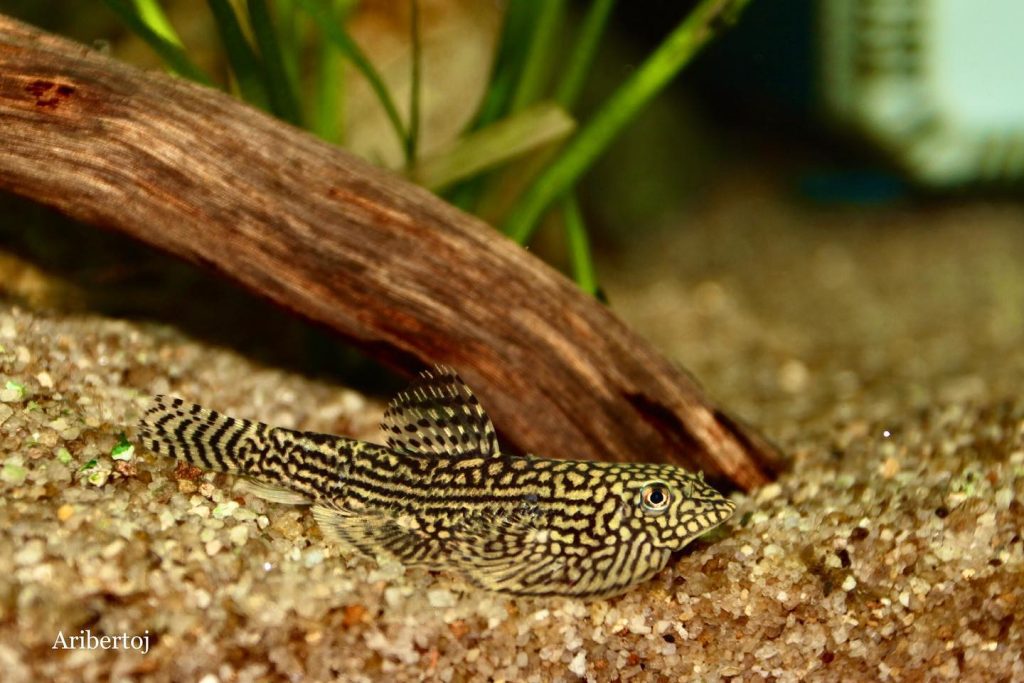
Ideal Tank Size
The size of the tank is paramount when accommodating the energetic and active tiger hillstream loach. A minimum of 75 liters (20 gallons) is essential for a small group, but for those looking to house a community, a 50-gallon tank is recommended. This extra space affords them room to swim and the necessary high water flow.
Remember, more space not only benefits their physical health but also supports their mental well-being by providing a habitat that more closely resembles their natural, spacious environment.
Ideal Water Parameters
Water quality can’t be overlooked when it comes to the care of tiger hillstream loaches. They thrive in a pH range of 6.5 to 7.5 and require a medium water hardness of 5 to 12 dGH. Maintaining water temperatures between 68ºF to 75ºF (20-23.8°C) is crucial, as is keeping ammonia and nitrite levels at bay.
Regular monitoring with a water testing kit will help you keep the parameters within the ideal range and guarantee a thriving environment for your loaches.
Filtration
When it comes to filtration, think currents and cleanliness. Your filtration system should be capable of circulating the water at a rate of 10-15 times the tank volume per hour. This not only ensures proper oxygenation for the loaches but simulates the fast-moving waters they are adapted to.
Additionally, incorporate hiding spots like caves or driftwood and a rocky substrate to provide a more natural setting. Be sure to use a tight-fitting hood to prevent your adept climbers from exploring outside the tank.
Lighting
Although tiger hillstream loaches are not naturally exposed to bright light in the wild, in captivity, bright lighting plays a critical role in promoting the growth of algae—an essential component of their diet. The ideal aquarium will strike a balance, providing strong lighting conditions to foster algae growth while also including low-light plant options like Anubias, which can offer shaded retreats and enhance the tank’s aesthetics. These plants are not only pleasing to the eye, but they also contribute to maintaining a balanced ecosystem, which supports the water quality crucial for the loach’s wellbeing.
Common Possible Diseases & Prevention
Hillstream loaches are renowned for their resilience but, like any fish, they can succumb to ailments such as parasitic and fungal infections. Ick, a disease caused by a parasite, is commonly indicated by white spots and abnormal swimming. Fungal issues may manifest through changes like sluggishness and reduced appetite.
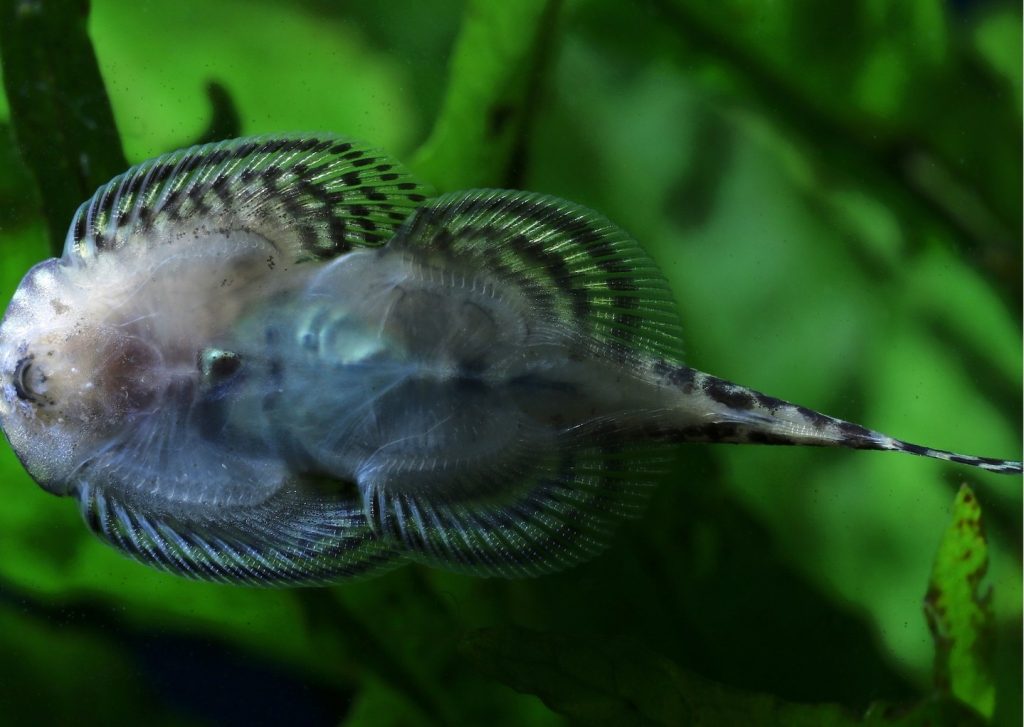
Prevention Strategies
- Maintain Water Quality: Clean, stable water parameters stave off disease. Check pH, hardness, temperature, and cleanliness consistently.
- Quarantine New Arrivals: Always quarantine new fish for at least two weeks to ensure they’re disease-free before adding them to your main tank.
- Regular Observation: Watch your fish’s behavior and condition. Spotting oddities early can lead to quicker, more effective treatment.
By upholding rigorous cleanliness in your tank and scrutinizing your hillstream loaches for any indications of distress or disease, you can help guard against infection and ensure your aquatic companions thrive.
Breeding Tiger hillstream loach In Aquarium
Breeding the captivating Tiger hillstream loach in a home aquarium is a rewarding yet challenging endeavor, with successful breeding occurring as early as 2006. To mimic their natural courtship, ensure your tank setup promotes their unique mating dance; a fascinating display where males entice females to a carefully selected nesting site.
For breeding, a spacious environment is vital; a 30-gallon tank is the minimal requirement. This space must simulate the fast-moving waters of their habitat through high-quality aeration and strong currents, essential for egg and sperm distribution and to stimulate natural breeding behaviors.
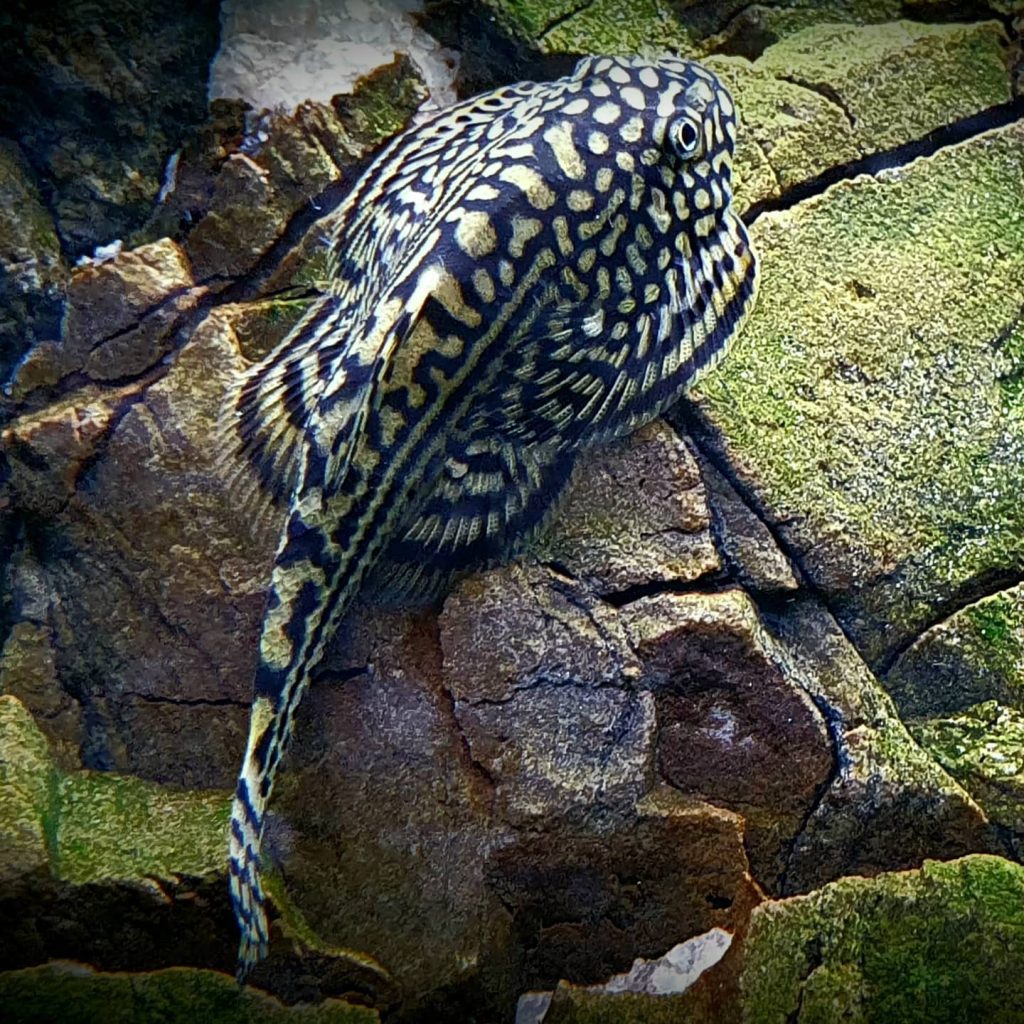
Recommended Breeding Tank Setup:
- Tank Size: Minimum 30 gallons
- Water Movement: Strong currents and excellent aeration
Feeding these loaches also demands attention. A balanced diet is key, and their nourishment should include a variety of sinking foods, such as algae wafers and freeze-dried bloodworms, to accommodate their bottom-feeding habits.
Suggested Diet for Breeding:
- Algae wafers
- Freeze-dried bloodworms
Remember, the road to successful breeding is paved with pristine water conditions. Maintain the water parameters within their optimal range to ensure the health and well-being of both parents and offspring, giving them the best possible chance at successful reproduction.
Are Tiger hillstream loach Easy To Keep?
Tiger hillstream loaches, with their elegant hydrodynamic shape and distinctive patterning, can be quite a draw for freshwater aquarium enthusiasts. However, they are not the easiest fish to keep. Caring for these peaceful fish requires creating an environment that closely mimics their natural habitat—incredible fast-flowing streams with high oxygen levels and clean, cooler water. Failure to provide such conditions can lead to stress and health issues for these sensitive loaches.
The significant factors contributing to the complexity of keeping tiger hillstream loaches include the necessity for strong water movement and higher levels of aeration. They thrive in water that is well-oxygenated with strong currents, which can be challenging to replicate in a home aquarium setting.
Additionally, they demand a specific water temperature range. Aquarium setups with temperatures consistently above 75 degrees Fahrenheit can be problematic, necessitating additional equipment or methods to maintain cooler water conditions.
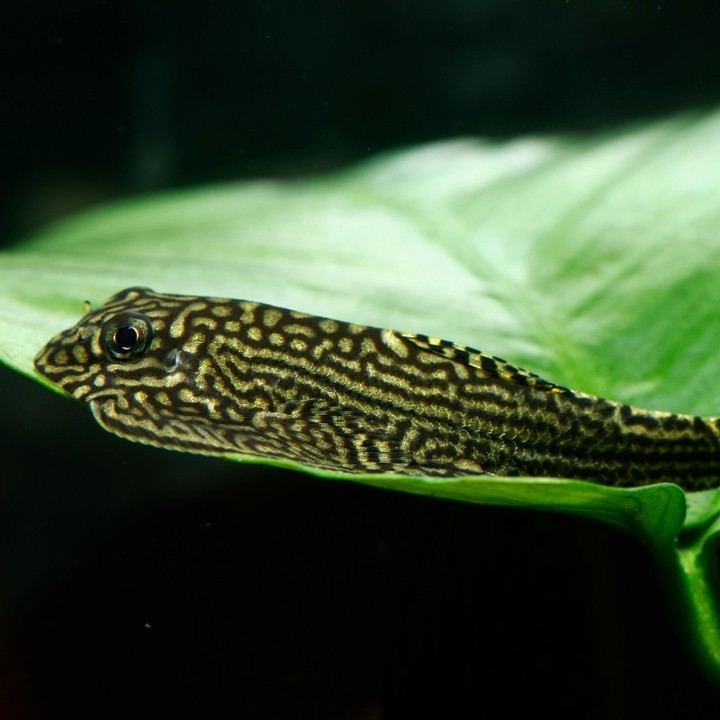
Are Tiger hillstream loach Sensitive To Water Changes?
Tiger hillstream loach are particularly sensitive to fluctuations in their environment, making regular water changes a critical aspect of their care. However, these changes must be conducted with caution. Sudden alterations in water parameters such as water hardness, temperature, and pH can cause stress to these delicate fish. Therefore, ensuring consistency when adding fresh water and slowly acclimating the loaches to new water conditions is highly important.
Maintaining consistency in water conditions avoids shocking the loaches’ system, providing them with the stable environment they need to thrive. A routine of regular water changes—typically about 25% to 30% of the tank water on a bi-weekly basis—is recommended. This helps to keep the water clean and the water quality high without undue stress on the fish.
In addition to careful water changes, monitoring the tank’s water parameters is essential. This includes checking for the appropriate levels of water hardness and temperature, as well as ensuring that the water movement within the tank remains strong. Adherence to these meticulous practices ensures the proper care and overall health of tiger hillstream loach.
Are Tiger hillstream loach Sensitive To Ammonia?
Ammonia sensitivity is a significant concern when keeping tiger hillstream loach. These fish demand high water quality and pristine conditions to live healthily. Ammonia, a common byproduct of fish waste and organic decomposition, can quickly accumulate to toxic levels in an inadequately maintained aquarium, posing a severe threat to the health of tiger hillstream loach.
High ammonia levels can result in a range of health issues for these fish—from stress and weakened immune systems to more severe consequences such as ammonia poisoning. Symptoms such as lethargy, loss of appetite, and difficulty in breathing may arise, eventually leading to mortality if not quickly addressed.
To prevent ammonia levels from becoming hazardous, a well-established nitrogen cycle and a regularly monitored filtration system are essential for converting ammonia to less harmful substances. In addition, owners should be diligent with tank maintenance, including regular water tests, to ensure fast action can be taken if ammonia levels rise.
Are Tiger hillstream loach Sensitive To Copper?
Tiger Hillstream Loach demonstrates acute sensitivity to copper, which is especially significant since copper can be a common trace element in tap water and aquarium treatments. Even relatively low levels of copper that might be tolerable to other fish can be detrimental to these loaches, potentially causing respiratory problems, erratic swimming behavior, and ultimately, fatality.
When medicating an aquarium or preparing tap water for use, it is crucial to select treatments that are copper-free and to use water conditioners that effectively remove copper from the water. Routine water testing for copper should also be part of the maintenance regimen, helping to ensure that these fish are not exposed to harmful levels of copper.
Prior to introducing any new item into their environment, be it plants, decorations, or substrates, a thorough examination for potential copper content is recommended, making the environment as safe as possible for tiger hillstream loach. By remaining vigilant about copper exposure and using copper-free products, aquarists can help protect the health and well-being of these fascinating fish.

